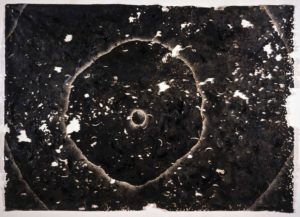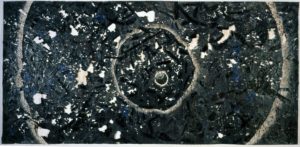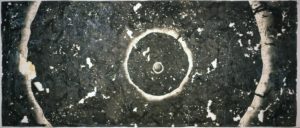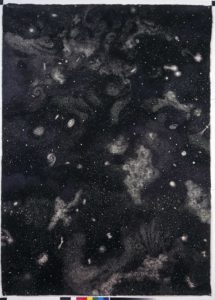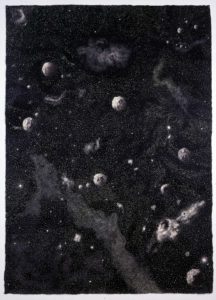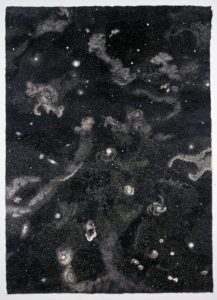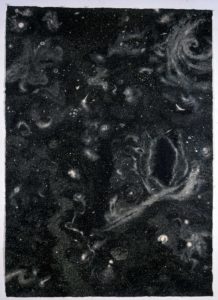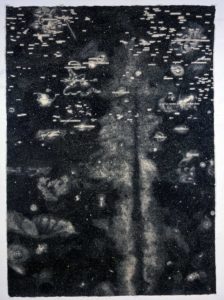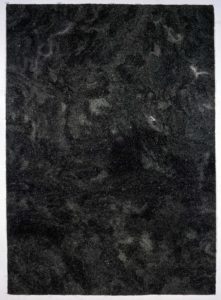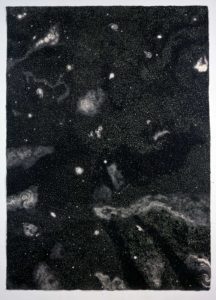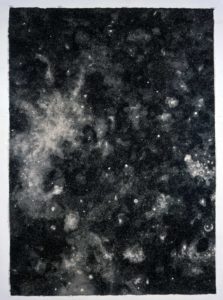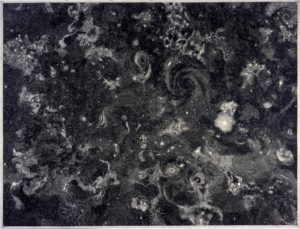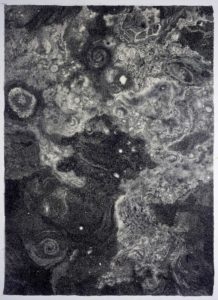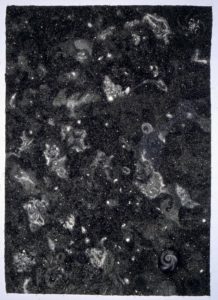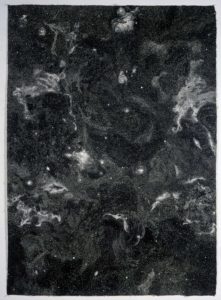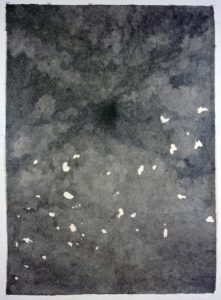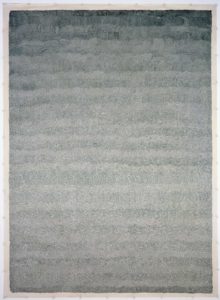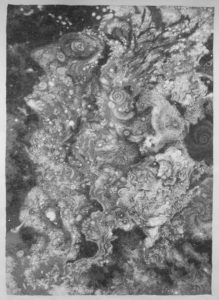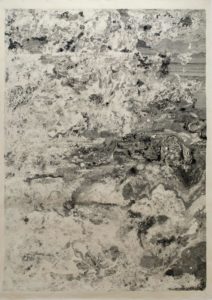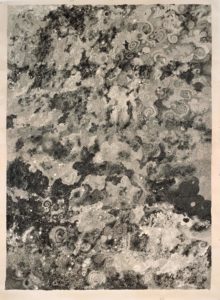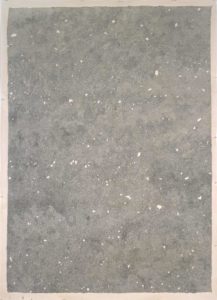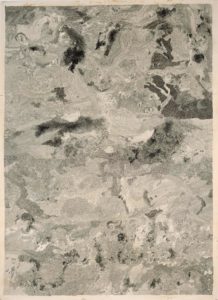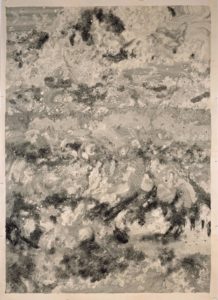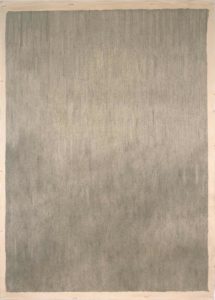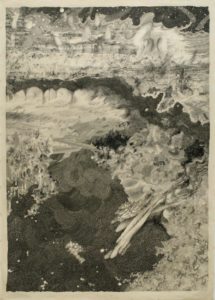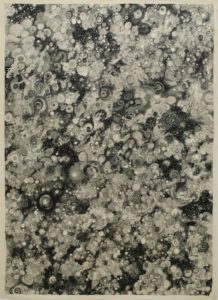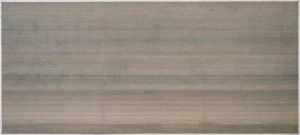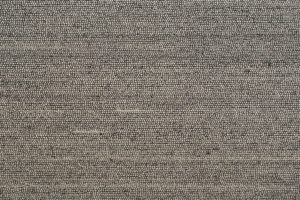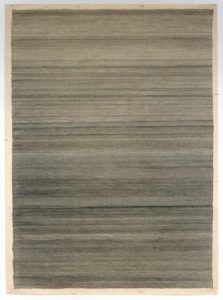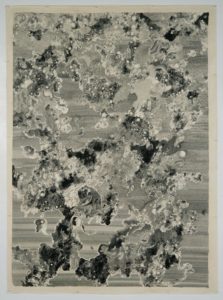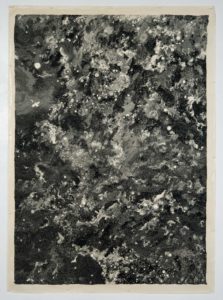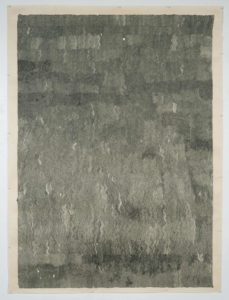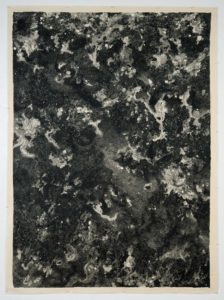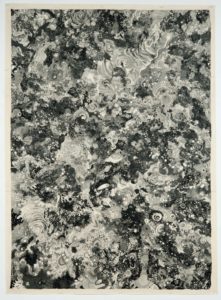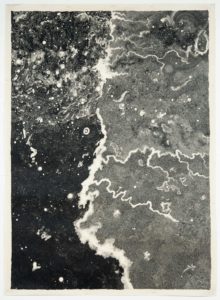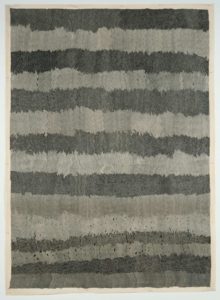Universe
Yoshio Kitayama has been creating large-scale paintings made with ink on traditional Japanese washi paper since the 1980s. Kitayama divides his work into two series: in his Icon series Kitayama creates two-dimensional images of human clay sculptures that he produces in advance and his abstract Universe series. Considering the figure-ground relationship in art, Icon focuses on the figure, the focal point, and in Universe he focuses on the ground, the background. He created the works of these series in pairs and in parallel with each other. Initially his Universe paintings were of concrete extraterrestrial planets and galaxies but has evolved since 2003 to paintings with countless accumulations of small circles covering the entire surface of his works. Just as the universe is created by particles and atoms, these aggregations of infinitesimal circles surge like waves to create worlds brimming with life.
“If you look up at the night sky, you can see the immense hemispherical universe.
The shape of the hemisphere is formed by countless stars and is bounded by the limits of our vision. The light of the massive stars come directly towards the stargazer singularly linking them together. To the stargazer the star is the end of a super distant one-point perspective. They are all equidistant from the stargazer and are like the vanishing point with nothing close or in the middle to orient the picture plane.
The darkness surrounding the stars holds an infinite depth and the light emitted from the hemispheric stars vanishes into this plane.
It is only possible for the eye to see because of light. When the subject has a shape, we can confirm it’s physical mass by the intensity of light that is reflected. When the subject becomes so small that it is impossible to see its shape, only a dot of light can be reflected, like a droplet. That is when the star becomes something primordial.
Universe is based on these ideas, directly capturing the hemispheric stars, layering them with perspective, removing depth. It captures an all-encompassing-point perspective and complete vanishing point.
In the works in this exhibition, I did not paint the darkness that I have until now. I imagined space after the big bang with its various aggregations of matter. In this minimal of circumstances, I have depicted the universe from a perspective of quantum mechanics. I entrusted these particles and atoms to the small circles in the composition. Each of these innumerable circles that I draw has its own unique world and as I draw them, I am conscious that time whittles away. Through this long process, I want to re-experience and become one with this deep space and time.
It is possible to physically express these infinitesimal circles second by second. Historical events are the subjects of Icon. Previously these subjects would stand out in blank backgrounds. But that evolved so that the backgrounds have countless aggregations of faces. The backgrounds have been filled by human aggregations, a myriad of worldly activities of men and women. The purpose is to depict the origin of humankind. The paintings in Universe have evolved similarly. When I draw the countless human figures in the Icon series and the countless circles in the Universe series, I think about all the people who have existed until now, the massive portrait of our ancestors. I think about the victims whose bodies still have not been discovered after the 2011 Tohoku earthquake and tsunami.”
(Compiled from an interview with the artist during the Universe exhibition held at MEM in 2014)
